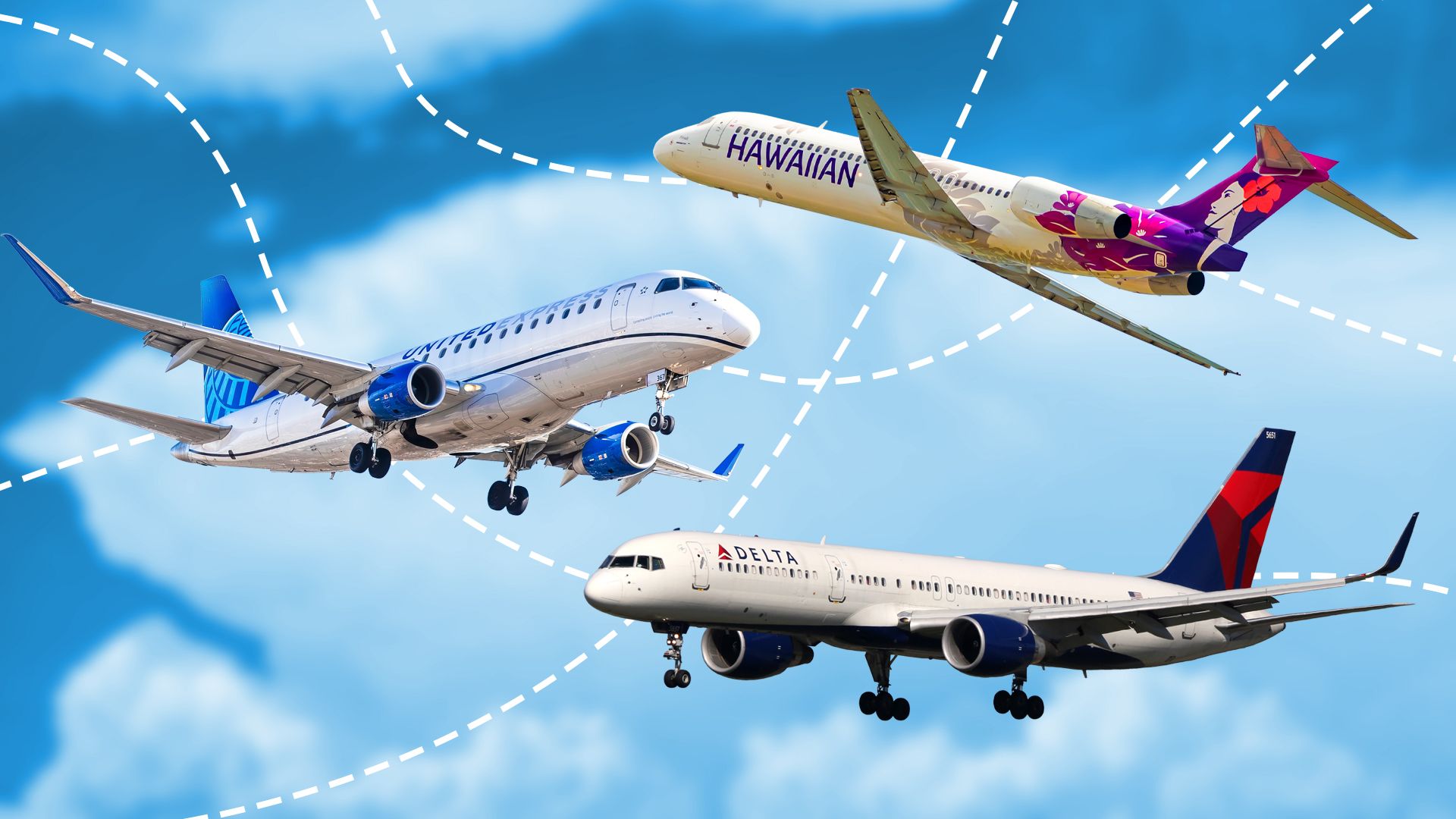World
Top 10 Most Popular U.S. Airline Routes for October 2025

The United States continues to dominate the global aviation market, with over 92 million seats available for domestic flights in October 2025. This figure represents a remarkable 27% increase compared to China’s 72 million seats, solidifying the U.S. as the leader in domestic aviation. An analysis by Cirium ranks the ten most popular airline routes this month based on seat availability, revealing significant insights into travel patterns and market dynamics.
Ranking the Routes by Seat Availability
The landscape of popular airline routes can shift dramatically due to seasonal variations and changes in demand. This month’s rankings include comparisons to October 2024, showcasing how various routes have fared year-over-year.
1. **New York LaGuardia – Chicago O’Hare**: With 320,000 seats available, this route has seen a 13% increase from last year. United Airlines leads with a 46% market share, operating 15 return flights daily, while American Airlines and Delta Air Lines follow with 29% and 21% respectively.
2. **New York JFK – Los Angeles**: This transcontinental route offers 307,000 seats, a 9% rise from October 2024. Delta Air Lines commands a 43% share, providing premium service with widebody aircraft. JetBlue has made significant inroads with a 31% share, showcasing its competitive Mint service.
3. **Los Angeles – San Francisco**: With 288,000 seats available, this crucial intra-state corridor has experienced a 10% decline compared to last year. United Airlines holds a 35% market share in a highly contested market.
4. **Denver – Phoenix**: This route has grown 7% year-over-year to reach 280,000 seats. Southwest Airlines leads the market with a 42% share, underscoring its strong presence in both cities.
5. **Atlanta – New York LaGuardia**: Offering 263,000 seats, this route has remained stable with a slight 1% increase from last year. Delta Air Lines maintains a commanding 63% market share.
6. **Atlanta – Orlando**: This busy corridor features 262,000 seats but has seen a 9% decrease compared to last year. Delta Air Lines again dominates with a 66% share.
7. **Los Angeles – Las Vegas**: Offering 261,000 seats, this route has encountered a 14% drop in capacity. Various airlines compete, but Southwest Airlines remains the largest operator with a 24% market share.
8. **Honolulu – Kahului**: The inter-island route has 248,000 seats, although it has experienced a 12% decline from 2024. Hawaiian Airlines dominates this route with a 66% market share.
9. **Denver – Chicago O’Hare**: This route has 243,000 seats available, a 2% increase from last year. United Airlines leads with a commanding 61% market share.
10. **Denver – Las Vegas**: Rounding out the list, this route has 239,000 seats, reflecting a 4% decline. Southwest Airlines is the primary operator with a significant market share of 40%.
Market Trends and Implications
The fluctuations in these routes highlight the impact of changing consumer behavior and airline strategies. For instance, the reduction in capacity on the Los Angeles – Las Vegas route can be attributed to a noticeable decline in visitor numbers to Las Vegas, as reported by the Las Vegas Convention and Visitors Authority. Similarly, the ongoing effects of the Maui wildfires have led to a decrease in flights on the Honolulu – Kahului route.
Airlines are continuously adapting their strategies based on demand, as seen with Southwest’s adjustments to its inter-island schedule in Hawaii. The competitive landscape remains dynamic, with legacy carriers and low-cost airlines vying for market share. Understanding these trends is essential for stakeholders across the aviation industry, from airlines to consumers.
As airlines navigate these changes, the rankings for October 2025 provide a snapshot of the current state of the U.S. aviation market, showcasing both the resilience and adaptability of the industry.
-

 World3 months ago
World3 months agoScientists Unearth Ancient Antarctic Ice to Unlock Climate Secrets
-

 Entertainment3 months ago
Entertainment3 months agoTrump and McCormick to Announce $70 Billion Energy Investments
-

 Lifestyle3 months ago
Lifestyle3 months agoTransLink Launches Food Truck Program to Boost Revenue in Vancouver
-

 Science3 months ago
Science3 months agoFour Astronauts Return to Earth After International Space Station Mission
-

 Technology2 months ago
Technology2 months agoApple Notes Enhances Functionality with Markdown Support in macOS 26
-

 Top Stories2 weeks ago
Top Stories2 weeks agoUrgent Update: Fatal Crash on Highway 99 Claims Life of Pitt Meadows Man
-

 Sports3 months ago
Sports3 months agoSearch Underway for Missing Hunter Amid Hokkaido Bear Emergency
-

 Politics3 months ago
Politics3 months agoUkrainian Tennis Star Elina Svitolina Faces Death Threats Online
-

 Technology3 months ago
Technology3 months agoFrosthaven Launches Early Access on July 31, 2025
-

 Politics3 months ago
Politics3 months agoCarney Engages First Nations Leaders at Development Law Summit
-

 Entertainment3 months ago
Entertainment3 months agoCalgary Theatre Troupe Revives Magic at Winnipeg Fringe Festival
-

 Politics2 weeks ago
Politics2 weeks agoShutdown Reflects Democratic Struggles Amid Economic Concerns





















